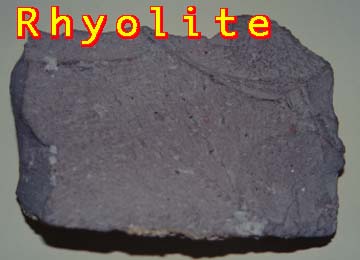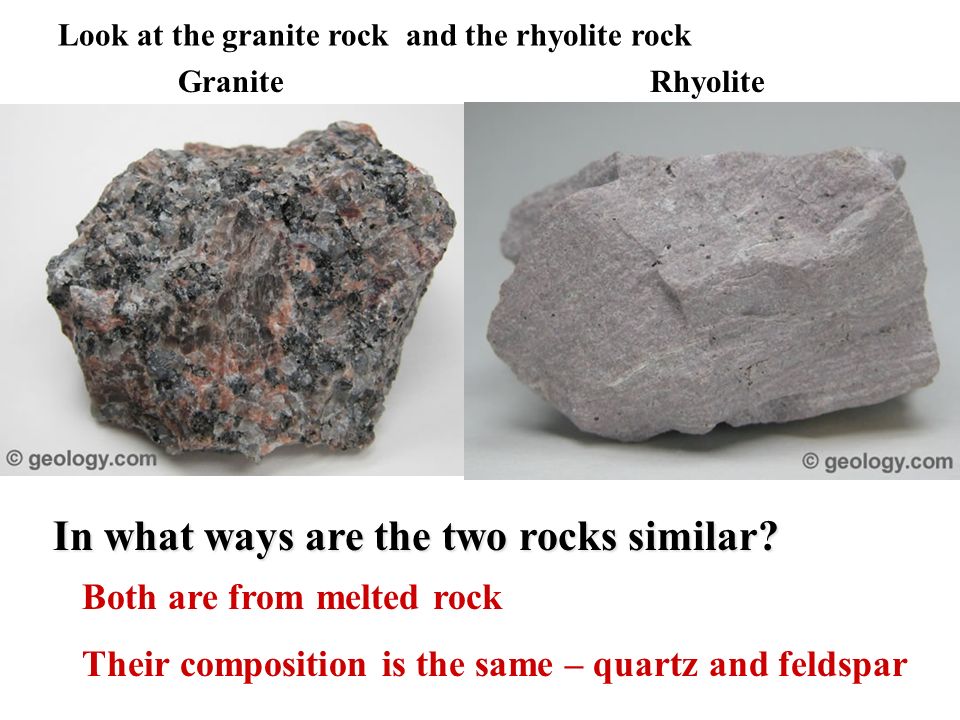The rock received its name from german geologist ferdinand von richthofen better known as the red baron a world war i flying ace the word rhyolite comes from the greek word rhýax a stream of lava with the suffix ite given to rocks.
Rhyolite and granite are alike in that they both are.
Both are felsic igneous rocks meaning they form from molten rock that is rich in silica sodium potassium and aluminum.
Larger crystal size in one of two igneous rocks of similar composition usually indicates that the rock with the larger crystals cooled for.
Granite and rhyolite have essentially the same composition.
A longer period of time than the other.
The difference between them is that granite cools slowly.
According to the earth science reference tables rhyolite and granite are alike in that they both are.
Rhyolite is similar in composition and appearance to granite but it forms through a.
They have very similar compositions but one is erupted onto earth s surface and the other crystallises at.
The difference is that granite sits on the plutonic diagram and rhyolite sits on the volcanic diagram.
Rhyolite extrusive igneous rock that is the volcanic equivalent of granite most rhyolites are porphyritic indicating that crystallization began prior to extrusion.
Rhyolite is a silica rich igneous rock found throughout the world.
Crystallization may sometimes have begun while the magma was deeply buried.
Both granite and rhyolite are felsic igneous rocks formed from very viscous silica rich magma.
So they have a similar composition but one is volcanic and the other is plutonic.




























